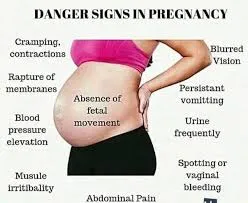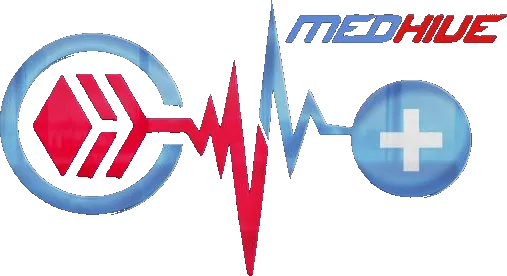Hello Med-Hive community
Here is my entry to the weekly prompt titled "Healthy Mother and Child" where we are writing posts about Obstetric care and safe delivery.
The pregnancy period is a very delicate time when the entire body system switches into readiness to carry another human being into birth and these various changes can be quite demanding as several mothers can attest.
However, many especially new mothers are not aware of all that goes on when the later part of the pregnancy starts approaching. Many people just await the rejoicing at the newborn experience and forget to know what to expect.
The normal term for pregnancy is known to span 40 wks +/- 2 weeks hence we say 37 completed weeks is good enough, however, some do not experience labour up till about 40 weeks or so, and some may even have to be induced. But being aware and prepared for all of this is a matter of concern for the health of the mother and the child.
I'll simply enumerate important factors that we all need to be aware of.
- SIGNS OF LABOUR/DANGER SIGNS
- BIRTH READINESS
- EMERGENCY/ MONETARY READINESS
- ENVIRONMENTAL READINESS
- MODE OF DELIVERY
- ELIMINATING THE DELAYS
SIGNS OF LABOUR/DANGER SIGNS
Labour doesn't happen suddenly. Like most other medical occurrences, it gives some very common signs that you are about to deliver and so when a pregnant woman's due date (The estimated date of delivery usually calculated using the last menstrual period date or the earliest obstetric Ultrasound) is approaching she should lookout for these signs.
They include painful, prolonged and progressive uterine contractions, back pain passage of show, feeling like urinating or pooing, and seeing water.
When any of these happen in no particular order, kindly approach your doctor, these are the signs that you are in labour. Your doctor should examine you and also check for the extent of your cervical dilatation. Your cervical dilatation is expected to occur gradually throughout labour and it is increased based on the strength, frequency and duration of your uterine contraction.
The phenomenon of the passage of the passenger and the pressure has been often used to describe the way the uterine contraction courses the cervix to efface and dilate which in this place is the passage through which the passenger which is the baby should pass through indication of vaginal birth. Women who are pregnant and approaching the time of labour must beware of these things before the time.
However, within the period of Labour, it is mostly advised to be on the lookout for some specific signs which are often called danger signs.

Src
They include abdominal pain, bleeding through the vagina, reduced fetal perception and others like difficulty breathing, frequency urinating, excessive vomiting, blurred vision and elevated blood pressure. Any of these should be duly reported to the Doctor in a hospital.

BIRTH READINESS
Birth readiness is this preparation for a mother and the availability of all the necessary things required to receive a baby. It is quite common mostly in developing countries that mothers newly delivered do not have
Diapers, wipes and other materials that they should keep waiting for the arrival of their baby. Safety and comfort having a baby after delivery are as important as while the baby was still in the womb. They are still very much vulnerable to harm and infections, especially within the few hours of life and so clean materials should have been made available for them. Most good hospitals around prefer that when mothers attend the antenatal care clinics they are told most of these. However only a few of them are aware.
EMERGENCY/MONETARY READINESS
It is often seen that families or even mothers countdown in their date of delivery and have no plan for emergencies or exigencies. It is not to say that we are hoping for the worst but at the delivery of new life there should be provision for what might not be expected. In these times and days, we see fathers invest in the name of the children yet unborn way before they are born and funds can be taken from this investment whenever there is something planned. This mindset can save the day as it did for a young man who showed up one night at the hospital with a pregnant wife and was told that he would require an emergency cesarean procedure to be done to deliver the child. It ended up in a sad story that he doesn't have any money and a lot of begging to see if we could go ahead with the surgery while he pays later. Well if you know how the country's health situation has been lately speaking of Nigeria, you would understand yeah this is near impossible. no one will do surgery without some form of down payment, but this young man has nothing at all to show. I ended up calling friends in the middle of the night for help and spends another three hours doing that before the decision the surgery was acted upon. The doctor on-call wasn't shellfish the hospital wasn't money-driven the decision wasn't Carlos it was just how the things need to be done for business as usual. But there was no plan for a delivery or an emergency. Again this is one of the things that should be in bed during the ante-natal sessions.
ENVIRONMENTAL READINESS
Bringing home a baby to a dirty environment is not a good practice. As I have said before babies are more prone to germs because their immune system is yet to develop intrinsic defence and they still depend on defence mechanisms from maternal antibodies.
taking them back home to an unsafe and unclean environment predisposes them to neonatal infections and even neonatal sepsis which could result in mortality.
It is an important part of birth readiness to prepare the place where the baby stays and does driving to cater for the baby and the mother.
It is a usual practice amongst Nigerians, especially in the eastern part where one of the grandmothers or sometimes when they can afford to travel the two grandmothers if they're both alive is the home of the newborn and assist in making the home comfortable safe and convenient for the child. this practice is commonly known as o m u g w o. this helps to provide more hands-on catering for a newborn and the mum and also prevents both you need help diseases and helps in Maternal recovery.
CONVICTIONS ABOUT MODE OF DELIVERY
This is a matter that should be settled way before the day so that women scheduled for an Elective Caesarean delivery can have all the needed information and materials ready and fog the vaginal delivery as well, this will help save time and money when it gets too urgent.
There are 3 highlighted limitations in the delivery of good health care in pregnancy or labour
Decision to go to the hospital. Some mothers think there is no need to deliver in the hospital and even make attempt to deliver at home, but this they often do with no supervision and mostly ends up with complications. Which can not be managed. So this decision should be made early to avoid such, and this gives the doctors and midwives more time to salvage the situation if necessary.
Getting to the hospital
This is mostly based on the speed at which the pregnant woman can arrive at the hospital. In cities where congestions are often possible, it is advised that the woman can relocate to a closer place to save time as well.Delay in receiving care due to the incapabilities of various hospitals or poor funding as previously highlighted.
When most of these limitations are taken into consideration, there could be some form of birth preparedness and complication readiness. And more potential for safe delivery of a healthy baby to a healthy mother.
IN CONCLUSION
Birth preparedness and complication readiness (BP/CR) is a strategy to promote the timely use of skilled maternal and neonatal care, especially during childbirth, based on the theory that preparing for childbirth and being ready for complications reduce delay in obtaining care.
Source
With the understanding of what comes around when the period of labour approaches.
There is no doubt this will help prepare ahead of time and have a safe delivery and postnatal recovery.


